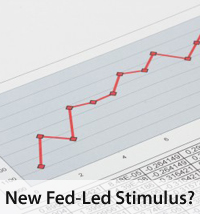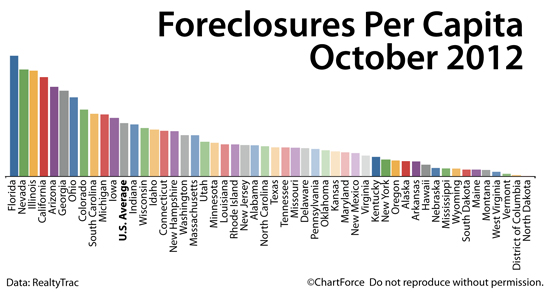 The Federal Reserve released its October Federal Open Market Committee (FOMC) meeting minutes last week, revealing a Fed in disagreement about the future of the U.S. economy and about what, if any, stimulus may be warranted in the next 12 months.
The Federal Reserve released its October Federal Open Market Committee (FOMC) meeting minutes last week, revealing a Fed in disagreement about the future of the U.S. economy and about what, if any, stimulus may be warranted in the next 12 months.
The “Fed Minutes” recaps the conversations and debates that transpire during an FOMC meeting, and is published 3 weeks after the meeting adjourns.
According to the October minutes, FOMC members “generally agreed” that a housing recovery is under way nationwide, citing increased housing prices, higher sales volume, and rising construction in many parts of the country.
FOMC members made no major policy changes at their last meeting, but agreed that a continuation of additional asset purchases would likely be necessary in 2013, in order to achieve a substantial improvement in the labor market.
Other notes from within the Fed Minutes included:
- On housing: Signs of improvement are “encouraging”, and mortgage rates are at historic lows
- On inflation: Essentially “unchanged”, notwithstanding recent increases in energy prices
- On Europe: Production indicators signal contraction in business activity and expansion
- On employment: Employment is rising, and unemployment remains high
The economic forecast prepared by the FOMC staff shows an uptick in consumer spending, residential construction, and labor market conditions which more than offset recent downgrades in the business fixed investment and the industrial production outlooks.
Through 2013, economic activity is projected to accelerate gradually, supported by a lessening in fiscal policy restraints. The Fed also anticipates that Cincinnati home buyers will benefit from looser credit standards.
Low mortgage rates are helping home buyers, too.
According to Freddie Mac, the average 30-year fixed rate mortgage rate was 3.34% last week, down from 3.55% in September. This has given a boost to buyer purchasing power nationwide and the year-end housing market may reflect it. Demand for homes remains strong.
The next FOMC meeting is scheduled for December 11-12, 2012.

 For homeowners who keep a garden, with the change of seasons comes a task list.
For homeowners who keep a garden, with the change of seasons comes a task list.